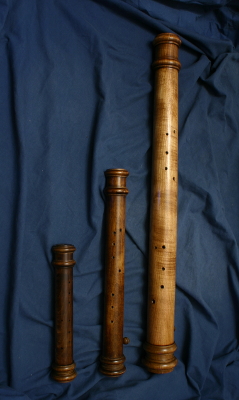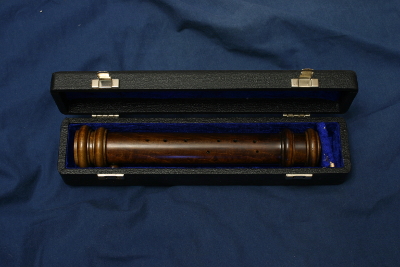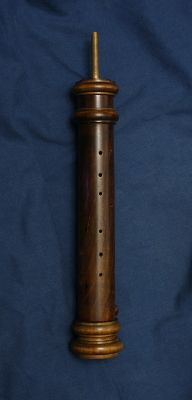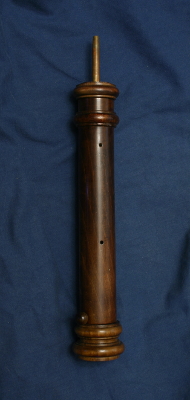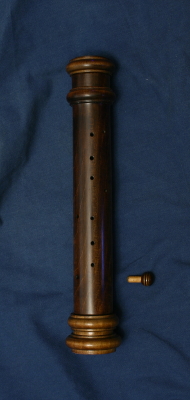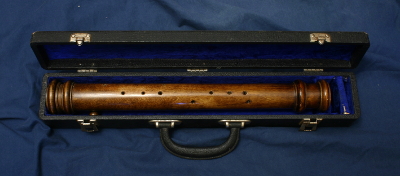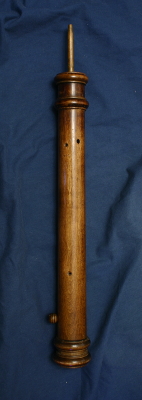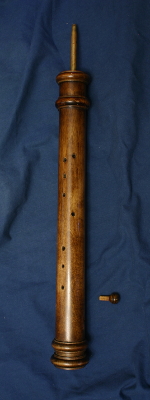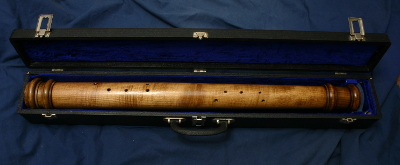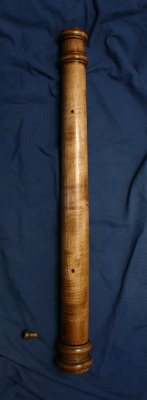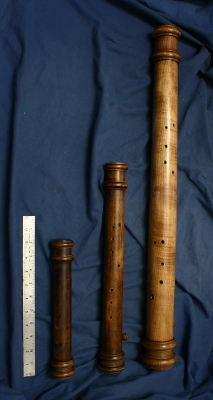
Baltimore Recorders.org
About the Sordun
The sordun is a cylindrically shaped double reed instrument with a narrow cylindrical bore. There is a small plug that protrudes from the side of the instrument, near its base, so that water can be drained from the bore. It is very closely related to the kortholt. They differ in that the kortholt uses a windcap to enclose the reed; the sordune's reed is exposed. Like many double reed instruments, our first record of its existence comes from the Renaissance. It is referenced by Zacconi in his text Prattica di Musica of 1592. The Sordun has many similarities to other wind instruments of that era. The sordun has multiple holes per finger, just like the rackett. However, on the sordun these do not take the form of tetines, small brass tubes that protrude from the instrument. The bore of the sordun doubles back upon itself, forming a u-shape. The dulcian also has a bore with a similar shape, and they both have unusual fingering patterns on this account. The cylindrical bore of the sordun gives it a much lower pitch than the conical bore of the dulcian.
The term sordun, comes from the Italian sordone, which in turn comes from the Latin adjective surdus, meaning muted or muffled. The French name for the instrument is sourdine. Sordun is the German form of the name. Sordunen is its plural form.
The sordun sounds very much like the cornamuse. It has a more muted sound than the crumhorn, which is not surprising given its name. In his Syntagma Musicum, Praetorius lists the instrument as having the range of an octave an a sixth. This is larger than the range of capped reed instruments, and even larger than the range Praetorius lists for the rackett, not more than an octave an a fifth.
Two great bass, and two bass sordunen have survived from the 16th century. They currently reside in the Kunsthistorisches Museum in Vienna. They differ from the instruments described by Praetorius. In addition to having slightly more elaborate turning of the wood, they each have several brass keys. These are placed on the lowest and highest holes on the instruments, as well as on the sides and backs of the instruments. The keywork and finger holes are placed so that they can be played in both right and left handed fashion, that the right hand is below the left hand, or that the left hand is below the right hand.
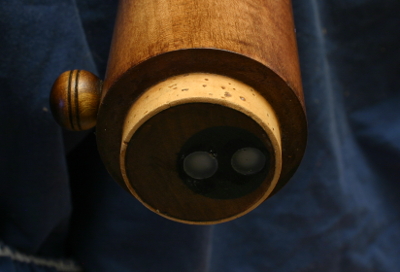 In this image the bottom cap has been taken off of the greatbass sordun. The double bore is sealed with paraffin and thus appears as two white circles. Inside the black plug, the bores are connected forming a large u shape.
In this image the bottom cap has been taken off of the greatbass sordun. The double bore is sealed with paraffin and thus appears as two white circles. Inside the black plug, the bores are connected forming a large u shape.
Web design copyright 2015 Michael Berger
